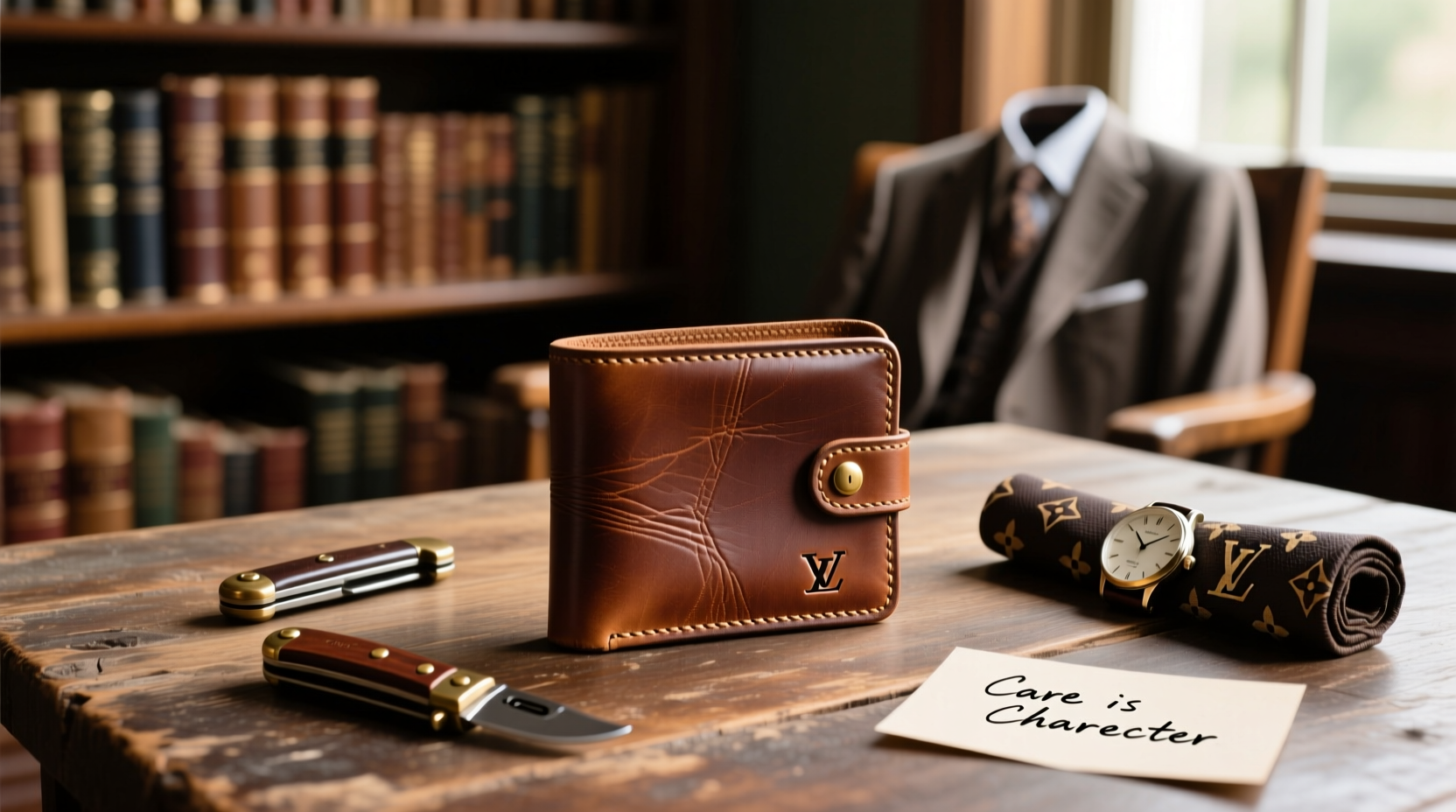A wallet is more than just a place to carry cash and cards—it’s a daily companion that reflects personal taste and practicality. Whether crafted from fine leather, woven fabric, or modern synthetic materials, every wallet endures constant handling, friction, and environmental exposure. Over time, neglect can lead to cracking, staining, warping, and loss of structural integrity. But with intentional care, even the most frequently used wallet can remain functional and stylish for years. This guide delivers actionable strategies to preserve both form and function, combining material-specific maintenance, smart habits, and expert insights.
Understanding Wallet Materials and Their Needs

Wallets come in various materials, each with distinct care requirements. Recognizing what your wallet is made of is the first step toward proper maintenance.
- Full-grain leather: The most durable and premium option. Develops a rich patina over time but requires conditioning to prevent drying.
- Top-grain leather: Slightly thinner and more affordable. More prone to surface wear; benefits from protective coatings.
- Suede/nubuck: Soft and textured but highly susceptible to moisture and stains. Requires specialized cleaners.
- Cotton canvas: Lightweight and casual. Resistant to minor abrasions but can absorb odors and dirt.
- Technical fabrics (e.g., Cordura, ballistic nylon): Highly durable and water-resistant. Easy to wipe clean but may degrade under UV exposure.
- Exotic leathers (crocodile, ostrich): Luxury items needing professional-level care and climate-controlled storage.
Step-by-Step Cleaning and Conditioning Routine
Regular cleaning prevents grime buildup, while conditioning maintains flexibility and appearance. Follow this timeline-based routine tailored to monthly use:
- Weekly: Empty all contents and wipe interior compartments with a dry microfiber cloth. Remove dust and debris from seams.
- Monthly: Clean exterior surfaces. For leather, use a damp (not wet) cloth with pH-neutral cleaner. For fabric, spot-clean with mild soap and water.
- Every 3–4 months: Deep clean and condition. Apply leather conditioner sparingly with a soft cloth, allowing it to absorb for 15 minutes before buffing.
- Biannually: Inspect stitching, edges, and card slots for signs of wear. Address fraying early to prevent further damage.
| Material | Cleaning Method | Conditioning Frequency | Avoid |
|---|---|---|---|
| Leather | Damp cloth + leather cleaner | Every 3 months | Water immersion, alcohol wipes |
| Suede | Suede brush + eraser | Only when visibly soiled | Standard leather conditioners |
| Cotton/Canvas | Spot clean with mild detergent | Not applicable | Machines washing unless specified |
| Technical Fabric | Wipe with disinfectant-free wipe | N/A | Bleach, direct heat |
Proper Storage and Daily Handling Habits
How you store and use your wallet impacts its lifespan as much as cleaning does. Poor habits like overstuffing or tossing it into a damp bag accelerate deterioration.
- Never exceed the intended capacity. Overfilling stretches seams and distorts shape.
- Rotate wallets if you own multiple—this reduces wear on any single piece.
- Store in a breathable cotton pouch when not in use, especially during travel or seasonal changes.
- Keep away from direct sunlight and heat sources, which cause fading and embrittlement.
- Avoid placing in back pockets for extended periods—body weight and movement create creases and stress points.
“Wallets are subjected to more friction and compression than most people realize. Simple behavioral adjustments—like removing bulky receipts weekly—can extend their life by threefold.” — Daniel Reyes, Product Longevity Analyst at Urban Accessories Lab
Real Example: From Worn-Out to Well-Kept
James, a 34-year-old architect, had worn the same full-grain leather wallet for five years. Initially proud of its rugged look, he noticed deep cracks forming near the fold and discoloration along the edges. After consulting a leather restoration specialist, he learned he’d never conditioned it and routinely left it in his car’s glove compartment—exposing it to extreme temperature swings.
He began a disciplined regimen: quarterly conditioning with beeswax-based balm, storing it in a linen-lined drawer at home, and limiting contents to essentials. Within six months, the wallet regained suppleness, and further degradation halted. Now in its eighth year, it remains fully functional and admired for its character-rich patina.
Essential Wallet Maintenance Checklist
Use this checklist monthly to ensure consistent care:
- ✅ Empty and inspect all compartments
- ✅ Remove expired cards, receipts, and unnecessary paper
- ✅ Wipe down exterior with appropriate cleaner
- ✅ Check for loose threads, peeling edges, or broken closures
- ✅ Condition leather if dry or cracked
- ✅ Store properly when not in active use
- ✅ Assess need for rotation or replacement
Frequently Asked Questions
Can I use household products like vinegar or coconut oil on my leather wallet?
Vinegar is too acidic and can damage leather finishes. Coconut oil may soften leather temporarily but attracts dust and can go rancid. Stick to pH-balanced leather conditioners designed for accessories.
How do I remove ink stains from a fabric wallet?
Blot immediately with a cloth dampened with rubbing alcohol (test on a small area first). Use a cotton swab for precision. Avoid scrubbing, which spreads the stain. For set-in marks, consider professional textile cleaning.
Is it worth repairing a damaged wallet?
For high-quality materials like full-grain leather or artisanal craftsmanship, yes. Simple repairs—re-stitching seams or replacing lining—often cost less than a new premium wallet and preserve sentimental value. Mass-produced, low-cost wallets are usually better replaced.
Conclusion: Style That Lasts Begins With Care
A well-maintained wallet doesn’t just last longer—it ages with dignity, gaining character while serving its purpose flawlessly. Durability isn’t solely about initial quality; it’s shaped by daily choices. From mindful storage to timely conditioning, the habits you adopt today determine how your wallet performs tomorrow. Treat it not as a disposable accessory, but as a curated part of your personal toolkit.









 浙公网安备
33010002000092号
浙公网安备
33010002000092号 浙B2-20120091-4
浙B2-20120091-4
Comments
No comments yet. Why don't you start the discussion?